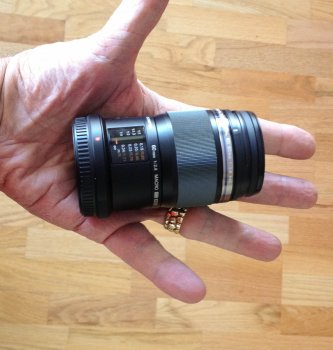Trying to save a buck because you apparently have some Canon cropped glass that you're willing to use on a FF body is a questionable investment. This is the time to rethink how you want to pursue your newly kindled interest in photography.
Are you such a good photographer you need FF?
Will your usage be constrained by the mere fact you're carting around an anvil? Can you take it wherever you want to go?
When it comes to future FF lens purchases, they're not going to be cheap.
If a FF dslr is what fits your requirements, I'd very seriously consider a switch to Nikon. It doesn't sound like you'd be obsoleting much gear.
If smaller makes sense, Fuji, Oly, Sony. These take a lot of research. While Sony gets a lot of buzz, having owned both Sony and Fuji cropped sensor cams, Sony is firmly on my do not consider list. The specs may make them an impressive camera but in use you have to live with the areas Sony cut corners in. As well as I find the Sony files need a lot more work in post. Something I repeatedly read from new adopters to Sony.
You assume that it is crop sensor glass. If the whole family is shooting Canon SLR, there is quite likely some FF glass. Also, using APSC glass is better than no lens at all. If OP needs to use that while waiting on money or shipping for their dream lens, it is better than nothing. As this was a stated reason for Canon, why throw out the switch to Nikon. I mean, I love my Nikon, but listen to what the OP is saying.
You also assume that you have to be "good enough" to use FF cameras. What is this nonsense? The button doesn't push any different. The only way to get good at anything is to practice. If OP feels they are 'good enough' to need FF, then they are. It doesn't matter what you, me, or Nation Geographic thinks. You don't need to pass a test and get a permit to move up past crop sensors.
The OP specifically stated FF Canon camera. Why do people insist on trying to talk the guy out of the major listed requirements. When you go looking for a long, fast tele, would you appreciate the guy at the store trying to redirect you to a nifty fifty? "You don't want to lug around that 600mm anchor, this 50mm is so much lighter. Its smaller, too. You could fit 10 of these in your kit for the same space, and 20 of them for the same price. Are you good enough to use a 600mm. How about The nifty fifty and 3 tele-converters? Its the best of prime and zoom. Just attach another converter when you need more reach!"
Now lets take a really good FF mirrorless and Canon lens. The outstanding 24-70 f2.8 is available on both platforms.
The Sony is 8.3*11.1cm at 975 grams for $2098 US at B&H. The Canon 8.85*11.1cm at 805 grams for $1749 also at B&H.
This means that a Canon 5D3 with 24-70 and battery (1606 grams) weighs 25 measly grams more than a Sony A7 with 24-70 and battery (1574 grams). The 6D with 24-70 weighs less than either at 1485 grams. And that doesn't include the extra Sony batteries. The lens is the same length with 5mm smaller diameter on the Sony. So the Sony rig comes out slightly smaller and slightly heavier and a bit more expensive. Of course, with the Canon, you would have all that extra money you didn't spend, but you can put that on a debit card so it doesn't count against your weight limit.
Want to try again with a 70-200 f2.8? Well the Sony isn't out yet, but the A mount is $2998 for price comparison.
We do have the sizing on the E mount version (again courtesy B&H). Sony E mount FF 70-200 f2.8 is 88*200mm at 1480 grams. The Canon is 889*1981 mm at 1490 grams at $1949. So the Canon is SMALLER than the mirrorless glass, but it is 10g heavier. It is also $1050 less.
None of this is "it feels smaller and lighter." This is math. The space saved won't amount to the free air space in your bag. You MIGHT squeeze a 50mm lens, but Sony doesn't make one for FF e mount. Now add an adaptor (and a point of loss/failure) to your kit. Fast glass to an FF sensor is going to take up some space. We can't beat physics (yet).



